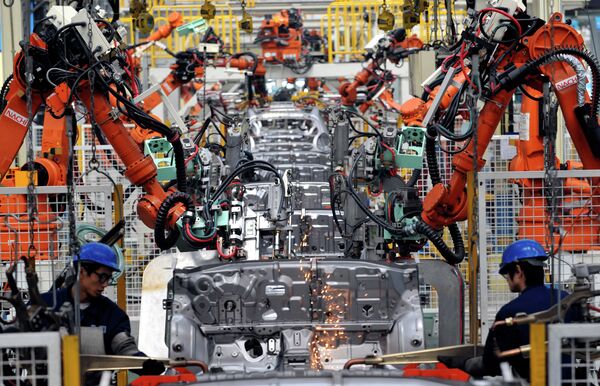If the US withdraws from the Trans-Pacific Partnership (TPP), the agreement could be renegotiated to open the door to China joining the world's largest regional trade initiative, The Australian reported Tuesday.
"The Australian has been told that during closed-door meetings yesterday among member nations of the TPP at the Asia Pacific Economic Co-operation summit in Peru, an option of 'going it alone' without the US was raised as a 'serious' consideration… [T]here was discussion about the potential for China, originally excluded from the final TPP agreement, to join," the media outlet pointed out, adding that Australian Trade Minister Steve Ciobo "was also supportive" of China's inclusion.
Speaking to Sputnik, Liu Ying of Renmin University of China noted that Beijing is leaving the door open for negotiations over China's role in TPP.
The Chinese academic stressed that instead of excluding or replacing each other in the Asia Pacific market, China and the US should team up to create a free trade zone in the region, especially in light of the current trade slump.
Commenting on the matter, Yakov Berger, Senior Research Fellow at the Institute of Far Eastern Studies of the Russian Academy of Sciences (RAS), emphasized that while China suits the role of the major economic driver in the region, it cannot substitute the US with TPP norms and regulations remaining intact.
"China represents a huge and growing market in contrast to the US. While America's market is still one of the largest in the world, it is unlikely to expand in the long run at the same pace as China's," the expert underscored.
The Russian scholar explained that the mechanisms designed for the TPP would be inconvenient for Beijing as they were aimed at containing China in the first place. Given this, Berger argues, the negotiation process should be started from scratch.

"The countries which are dependent on their exports want to retain their trade advantages. For instance, Australia, which is supplying iron ore and coal to China, is not interested in implementing any measures against Beijing. Still, the TPP project, which was created under the auspices of the US, is directed against China. And, now that the US is apparently planning to quit the deal, [TPP countries] are looking for a substitute for the US," Berger told Sputnik.
According to Berger, the geopolitical interests of China and those countries which want Beijing to become their TPP partner are diametrically opposed. That makes the compromise very unlikley, he stressed.
Still, it begs the question why China would waste its time on renegotiating the TPP agreement while it is pushing ahead with its own project, seen by many as a viable alternative to the Trans-Pacific deal.
"With political clouds over the 12-nation Trans-Pacific Partnership, the spotlight shifts to the 16-nation Regional Comprehensive Economic Partnership [RCEP], which would strengthen trading ties among China, India and others with members of the Association of Southeast Asian Nations, or ASEAN," Bloomberg reported Tuesday.
The RCEP offers to remove trade barriers between the 16 participants of the agreement. What is more important, unlike the TPP, RCEP does not require its members to liberalize their economies or, for example, to implement a highly controversial Investor State Dispute Settlement (ISDS) mechanism, which allows multinational corporations to sue national governments.
According to Bloomberg, Australia, Brunei, Japan, Malaysia, New Zealand, Singapore and Vietnam have been spotted negotiating both TPP and RCEP deals.
So, it seems that regardless of Washington's quitting the TPP, Asia Pacific nations are likely to end up with all the marbles.




